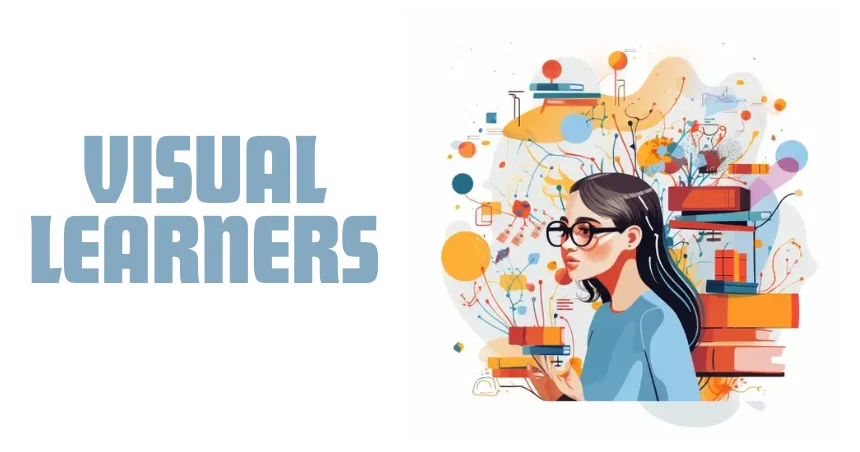Neil Fleming’s VARK model theorizes types of learning for individuals that differ in form and nature depending on their learning requirements. VARK model conceptualizes four learning styles- auditory, visual, reading or writing, and kinesthetic. All these learning styles are unique on their own and contribute to individual learning significantly.
Learning is a complex process. It requires both memory and attention. If you are an auditory learner, you can learn by hearing and listening. As opined by Neil Fleming, Visual Learners learn by seeing. They can visually recall things. Visual learners may require to take notes, follow diagrams and charts to understand better. So, if you know your learning style, you can use it to your advantage and make the most of your study time to achieve great results.
Do you find lectures boring? Do you understand lectures when they are explained with the aid of charts and illustrations? Then you are a visual learner and merely listening to a lecture might not help you Through this article, we will discuss some valuable study tips for visual learners who process and retain information best when they see it.
Study Tips Best Suited for Visual Learners
1. Mind Maps at your aid
Mind maps are visual representations of ideas and concepts hovering in the minds of the learners. By creating mind maps, visual learners can get a bigger picture of the ideas and concepts in an organized manner. Mugging up complex topics cannot help visual learners. Using mind maps, they can apprehend any complex topic easily and think creatively.
2. Create charts, graphs and diagrams
Drawing out flowcharts, graphs and visual illustrations will help you easily recall information, organize concepts and articulate what was being taught. Charting out information will not only provide a better understanding of the concept but will also present a big-visual picture of what you have learned. These can be your go-to-study material before exams.
3. Use color coding
Color coding is an effective method of remembering information. Use highlighter pens of contrasting colors to highlight important points, definitions, examples and key concepts. Color coding not only will help you to organize concepts and draw attention to important points, but its visual effect will allow you to learn and memorize information easily.
4. Look at the person who is speaking
When you are sitting in a lecture, look at the teacher who is speaking. Try to catch her facial expressions and body language when she is teaching. Putting an image to the words can help you retain information later.
5. Watch video lessons
Watch videos about topics that are being taught in class. Try to learn from the videos. Take notes and visualize the concepts in your mind. Watch video lectures first and then read the chapter from your book. This will help you retain information and connect points easily.
Also Read: What are the 3 Secret Study Tips? Clever Ways to Score Highest in Every Exam
6. Use flashcards
Flashcards can be a great way to learn. Write out limited materials on the flashcard and categorize them from most to least important. While studying, visualize the concept and create a mental picture of the information. Don’t forget to flip through them once in a while each week.
7. Avoid any audio-visual distractions
While studying, concentrate on what you are reading or watching. Do not let any external noise or inappropriate videos distract your attention. Stay focused. Choose a quiet place to study.
8. Visualize spellings
When hearing or learning any new word that you want to remember, visualize its spelling. This will help you memorize words faster and easier.
9. Use virtual whiteboards to collaborate and share
Visuals are capable of illustrating any topic effectively during classroom interactions. Collaborative learning is desirable for any student to share knowledge and understanding for better performance. Advanced digital tools like virtual whiteboards are best for visual learners to acquire and apprehend shared information in remote learning environments. This helps them in memorizing the information and knowledge they are getting from teachers and classmates.
10. Visually demonstrate what learned
When students teach any content, they tend to develop a deeper and prolonged understanding of the subject. Visual learners can demonstrate their learning by sharing their learning through PowerPoint presentations, concept maps, annotated visuals, and more. This can help them in having a better understanding of subjects and scoring good marks in examinations.
These study tips for visual learners will help you improve your grades and achieve academic success. If you are a visual learner, then these study tips are what you need.










